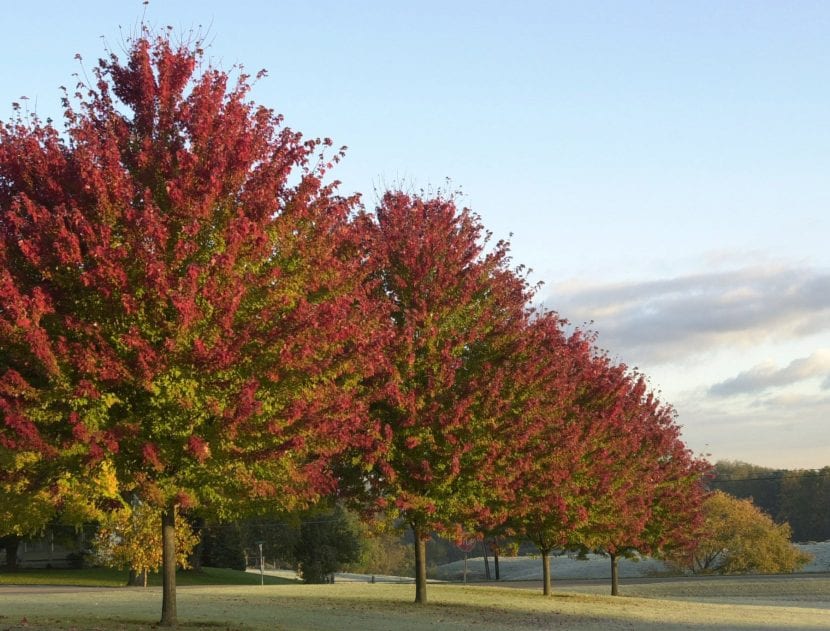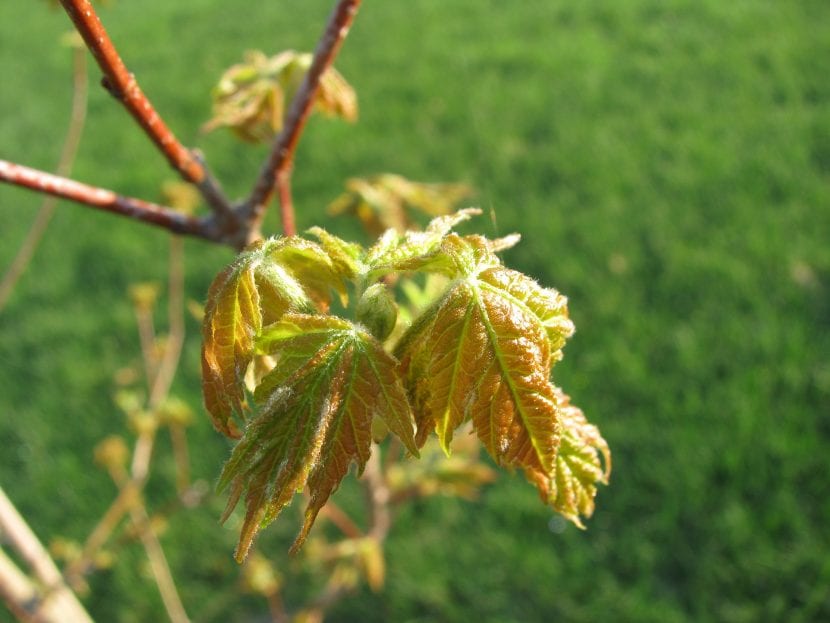
Image - onlinetreees.com.au
Maple trees are my weakness, and I know so many other people. If you are one of them, the variety that I am going to present to you below is possible that you like it so much that you want to enjoy its beauty in your garden from now on: Acer freemanii.
Although you should know that this name is misspelled, what happens is that we rarely remember the »x» that separates the name from the last name (now you will see what I mean by this). Still, this does not make the tree more or less attractive; in fact, it is magnificent even without leaves. Do you want to know him better?
Origin and characteristics
Our protagonist is a tree that does not originate from anywhere, but rather it is a hybrid between Acer y Acer saccharinum. Its true scientific name is acer x freemanii (the »x» indicates that it is a cross between two species). There are different varieties, such as the 'Armstrong' that exceeds 15 meters in height, or the 'Jeffersed' Autumn Blaze whose leaves turn an intense reddish color.
Generally, grows between 6 and 16 meters, and has a straight bearing, with a relatively wide broad crown (about 4-6m in diameter) but straight. The leaves are deciduous, green most of the year except in autumn when they can turn reddish. The seeds are samaras that need to be cold before germinating.
What are their cares?

If you want to have a copy, we recommend that you provide it with the following care:
- Location: outside, in full sun.
- Earth:
- Pot: substrate for acid plants. If you live in the Mediterranean, mix 70% akadama with 30% kiryuzuna.
- Garden: acidic, fertile, with good drainage.
- Irrigation: 3-4 times a week in summer (more if the weather is very hot and dry), every 6-7 days the rest of the year. Use rainwater or lime-free.
- Subscriber: pay from early spring to late summer with Organic fertilizers, choosing the liquids if it is potted.
- Multiplication: by cuttings in spring.
- Rusticity: it is suitable for temperate climates, with temperatures between 30ºC and -18ºC.
What did you think of the Acer freemanii?